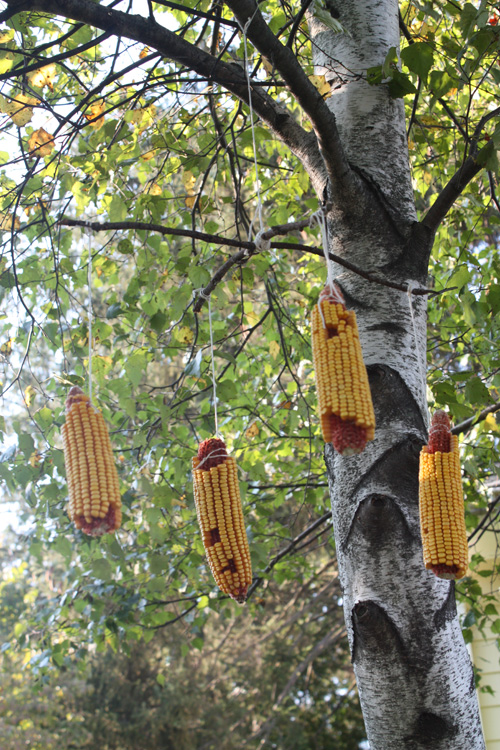By Roger Williams Park Zoo’s Education Department
Fall is a fun time to observe back yard animals. When the days get shorter and the temperature cools, there is a lot of hustle and bustle as wildlife gets ready for the cold New England winter.
 One of the most entertaining animals to watch is the grey squirrel. Squirrels spend the fall furiously finding and storing food. Squirrels are scatter-hoarders. This means that they collect and bury small portions of food in many different places, individually called a cache. During the winter when food is scarce, a squirrel will use his memory and sense of smell to relocate its caches. This behavior is one way that the squirrel is an important part of our local ecosystem. Forgotten caches often help in the seed dispersal of many trees.
One of the most entertaining animals to watch is the grey squirrel. Squirrels spend the fall furiously finding and storing food. Squirrels are scatter-hoarders. This means that they collect and bury small portions of food in many different places, individually called a cache. During the winter when food is scarce, a squirrel will use his memory and sense of smell to relocate its caches. This behavior is one way that the squirrel is an important part of our local ecosystem. Forgotten caches often help in the seed dispersal of many trees.
During the fall, squirrels will be most active a few hours after sunrise and a few hours before sunset. As they are gathering, squirrels will climb, jump, spin, and twirl – almost anything it takes to collect delicious eats. This makes for quite the nature show!
The best way to spot all of the action this season is to build a corn-cob squirrel feeder for your yard. Dried corn is a favorite food of squirrels, and readily available at local feed and gardening stores. The best part is that you can make the feeder as simple or as intricate as you want. Read on for some examples.
Simple Corn Cob Feeder
Materials:
Twine
Scissors
Dried Corn Cob
Directions:
- Tie one end of the twine to the dried corn cob.
- Hang from a tree branch.
- Observe and enjoy!
Balancing Corn Cob Squirrel Feeder
Materials:
Twine
Scissors
4 dried corn cobs
2 sticks (gathered from your yard)
Directions:
- Using twine, tie a dried corn cob on to both ends of a stick. Repeat with the second stick and pair of corn cobs.
- Find the balancing point for each stick. This is the point on the stick where the two corn cobs hang evenly on either side.
- Cross the two sticks at their balancing points so that you form an “X” with a piece of corn hanging from each end. Secure them in place by wrapping twine several times around the meeting point of the sticks.
- Using a longer piece of twine, hang the corn cob feeder from a tree branch. Tie one end of the twine to the center of the feeder and the other end to a tree.
- Observe and enjoy!
Another idea to help you engage your kids in the wonders of nature all around us, from Roger Williams Park Zoo‘s awarding winning education department. 1000 Elmwood Avenue, Providence, RI
Photo Credit: Roger Williams Park Zoo









[…] In the fall, squirrels start storing away food for winter. Used dried corn, some string, and watch them get to work! Get directions to make a corn squirrel feeder here. […]